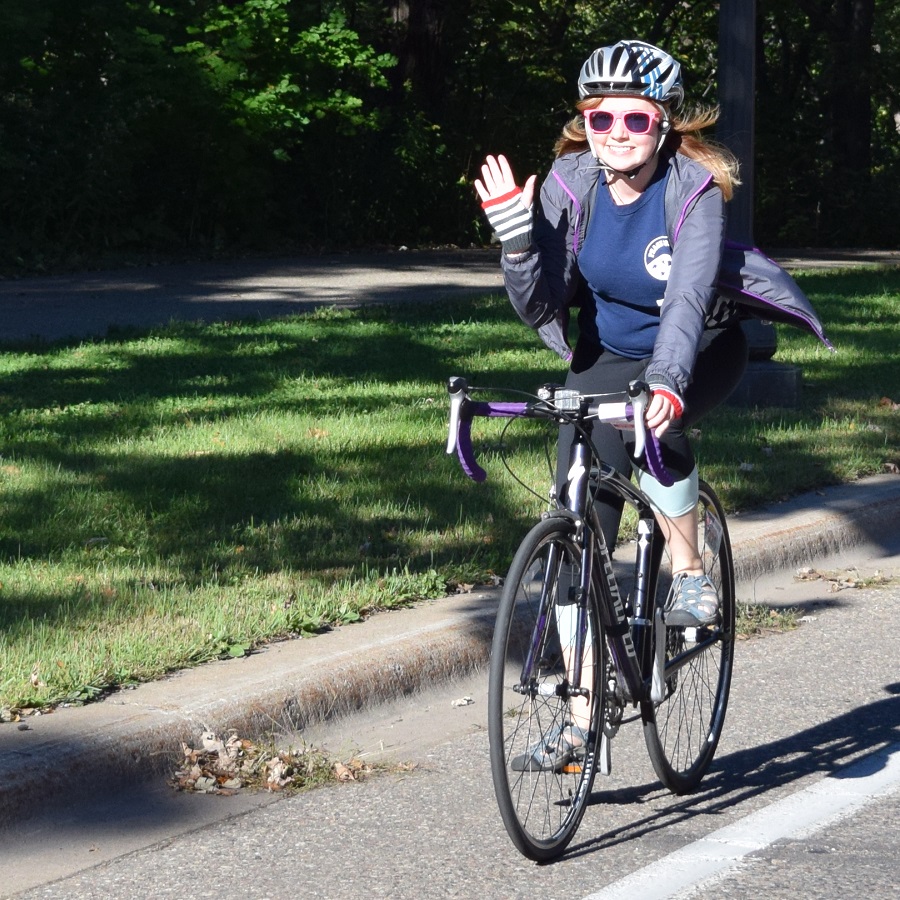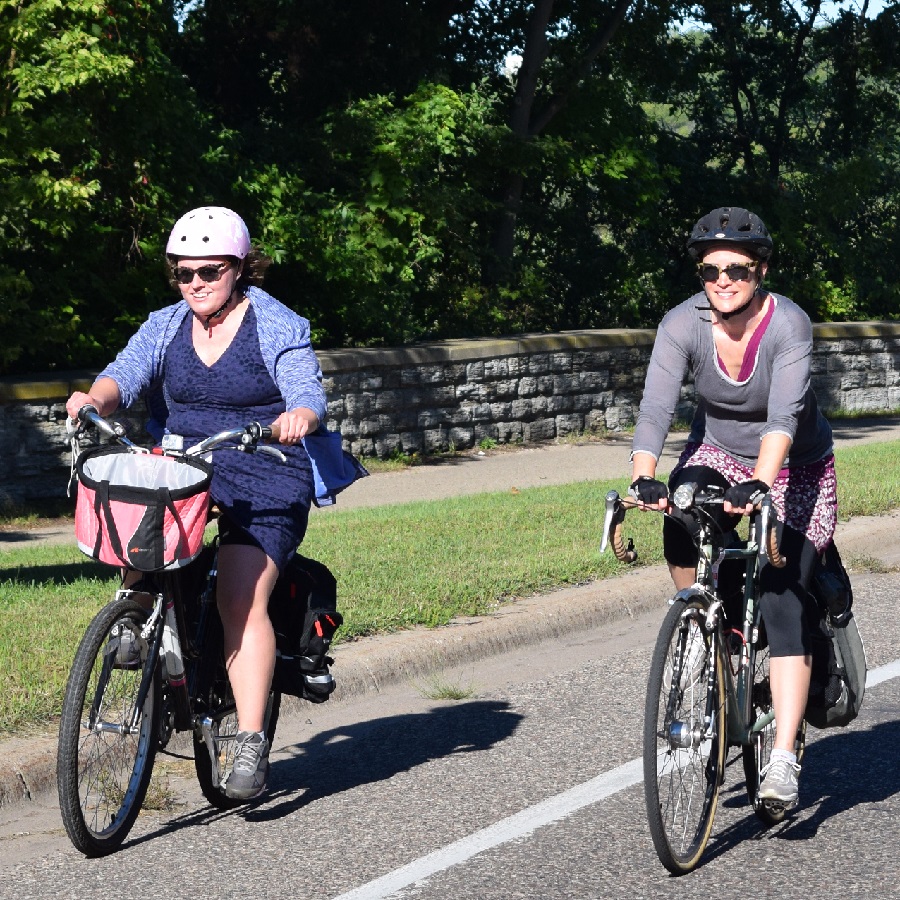by Jess Leong, HaveFunBiking.com
Fall bike riding is a gorgeous time to get on your two-wheel steed and put the pedal to the medal – or maybe just the pedal. The crisp autumn air makes breathing easy, and heat stroke isn’t an issue without a hot sun. With the gorgeous hues of oranges, yellows, and browns that color the landscape, fall bike riding is arguably the best.
Rather than putting a bike in storage early due to the fluctuation in weather, here’s the answer you’re looking for. To conquer this fall problem, wear layers. While this might seem obvious, the key lies in correctly layering appropriate clothing. If correctly done, it can optimize comfort for the rider. Not only that, but it can also increase the ability of each layer to work to maximize moisture and temperature regulation.
Fall bike riding base layer
Your base layer should have excellent moisture and wicking ability to keep your body dry. Also, opt for something you’d wear if it were to get on the warmer side compared to the colder side for this layer. For example, wear a short-sleeved jersey, undershirt, and arm warmers compared to a long-sleeved jersey or shirt. If it gets too warm, you can only do so much with long sleeves, whereas you can always take off the arm warmers if you become too toasty.
For your bottoms, keep up with this same principle. Realize that your legs will warm up quickly while pedaling. Whether you keep them bare by wearing shorts or your usual spring/summer attire or long knickers, it’s good to layer these items. Leg warmers are also a good thing to use if you have them. Also, they can quickly come off and be put away when the temperature rises.
Remember, knees should always be covered at temperatures below 50 degrees Fahrenheit. Even if they warm up during the ride, with wind, it’s best to keep them protected from the cold.
Top Layers
The top layers are arguably the most essential layers you need to choose. This is because these are the layers that you’ll remove to try to reach that ideal temperature. There are many different potential items that you can layer over the base layer, but the rule of layering for fall weather applies. The Rule: Layer smartly. Remember that the last item you’re putting on should be the one you’d want to take off first.
We like the idea of having a long-sleeved jersey or shirt that can help keep the arms warm, whether that ends up over or under-arm warmers (if you decide to use them). A windbreaker can be exceptionally helpful. Even if no gales of wind are going through the area, biking moves you through the air and produces a ‘wind’ that can chill you. Over the long sleeves, we’d recommend a jacket – heavy or lighter, depending on you and the weather. Other layers can be added as well.
Other Important Areas – Head, Fingers, and Feet
Today, many different accessories and products can help keep the other parts of your body warm, keeping you happy and riding longer. Scarves, earmuffs, full-fingered biking gloves, cycling caps, and shoe covers to reduce cold air into the shoe – these are all things that you can consider adding to your list.
Neck Up
Scarves help ensure cold air doesn’t sneak into your jacket where you don’t want it – plus, it keeps your neck and can keep part of your face warm!
Riding is hard when your ears are cold and aching. This is where earmuffs, or a hat with earflaps, are welcome. It’s something you won’t regret once out biking, especially when it gets colder or the wind picks up!
Your head tends to be overlooked when going out to bike. While the helmet can feel warm while biking, when the temperature drops more, sometimes a little more is needed to keep your scalp warm. Today, many helmets allow some leeway for biking caps or headbands to help keep the rider’s head warm.
Hands and Fingers
Many bikers have fingerless cycling gloves, but full-fingered biking gloves are a must when it comes to colder weather. When your fingers are frozen, stiff, and numb, you can lose your grip and find it difficult – if not near impossible – to shift gear. Since this is so dangerous for the rider, we highly recommend getting a good pair of full-fingered biking gloves.
Feet and Toes
Shoe covers aren’t generally necessary until the temperature drops – usually below 50 degrees Fahrenheit. Socks made of wool have excellent breathability and warmth, but even so, your toes can get chilled when the wind picks up. Shoe covers can help keep the wind out from those breathable athletic shoes many wear in the summer.
Again, if you’re unsure how to layer, remember that the last article of clothing you put on should be the first item you’ll want to take off.
It might take a few tries to get this right. With so many different material types, combinations, and conditions to factor in, it takes a few trial-and-error runs to find the order to layer on clothing. However, once you figure it out, it’s easy sailing! Then, you can reach your perfect temperature and adjust whenever needed during your bike ride.
HaveFun and ride on!
Jess Leong is a writer for HaveFunBiking.com.




